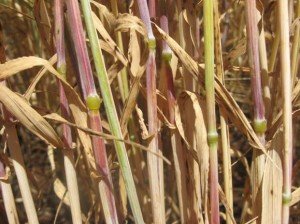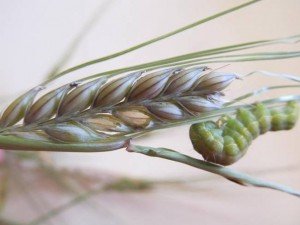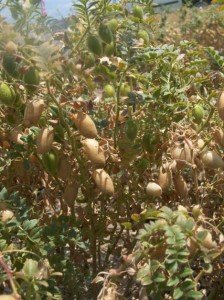As winter crops finish up and approach harvest, there are a couple of pests that still have the potential to cause some concerns.
Armyworm and helicoverpa in barley, wheat and oats.
There have been a number of reports of armyworm activity across the northern region in isolated pockets. Armyworm has the capacity to lop heads in barley, wheat and oats after the crops have turned. As the crop turns the stems dry down, but the nodes take longer to dry, staying green for some time after the rest of the plant is dry

As a result, armyworm that had been feeding on leaf material before it dried off, feed on the only green part of the plant left, the nodes. When the larvae feed on the node below the head it results in the characteristic head lopping.
It is estimated that one large armyworm larva can lop up to 7 heads per day (armyworms are active mostly at night). At one larva per square metre, that equates to around 70 kg/ha of lost grain per day. A damaging larva may be active for up to 10 days before pupating (see previous Beatsheet posting on calculating armyworm damage in wheat https://thebeatsheet.com.au/winter-cereals/armyworm-in-wheat/).
Monitor for armyworm with a sweep net and look for evidence of larvae feeding in the crop – ragged leaves, frass along the rows and lopped heads.
Helicoverpa may also be present in barley and wheat crops. Monitor for them in the same way as for armyworm. Helicoverpa tend to graze on developing grain and the impact of this damage is much less than that caused by armyworm because typically only a few grains per head are damaged. Helicoverpa do not head lop like armyworm.

Helicoverpa in chickpea
As chickpea crops finish off, ongoing rain is resulting in some crops reshooting, providing green material on which helicoverpa can continue to feed. The impact of these larvae is limited if the bulk of the pods are dry and mature, even large larvae cannot penetrate a dry pod. However, immature pods and pods softened by regular rainfall are susceptible.
These persistent larvae will turn up in beatsheet sampling, but it is more critical at this stage of the season to determine how susceptible the crop is, rather than focussing on the number of larvae on the beatsheet.
It may be appropriate to dessicate the crop, rather than wait for it to dry down naturally. Without green leaves or pods to feed on, helicoverpa larvae will not survive.
Article by Melina Miles

